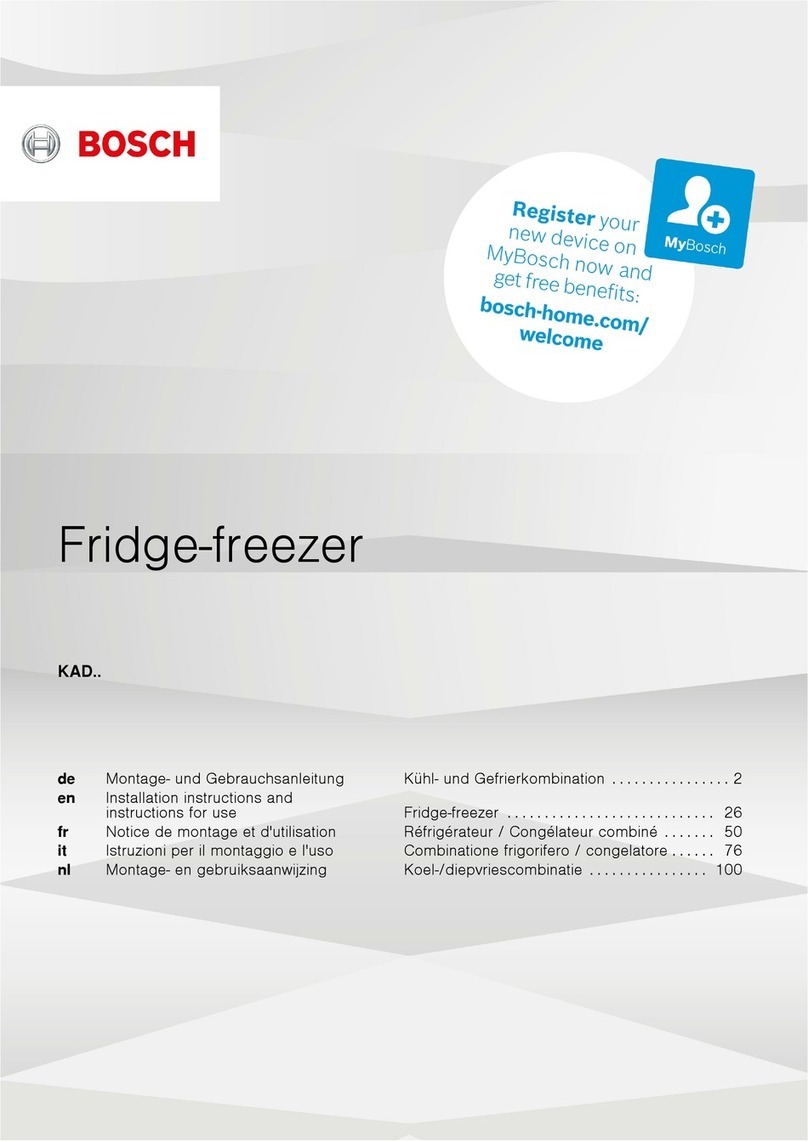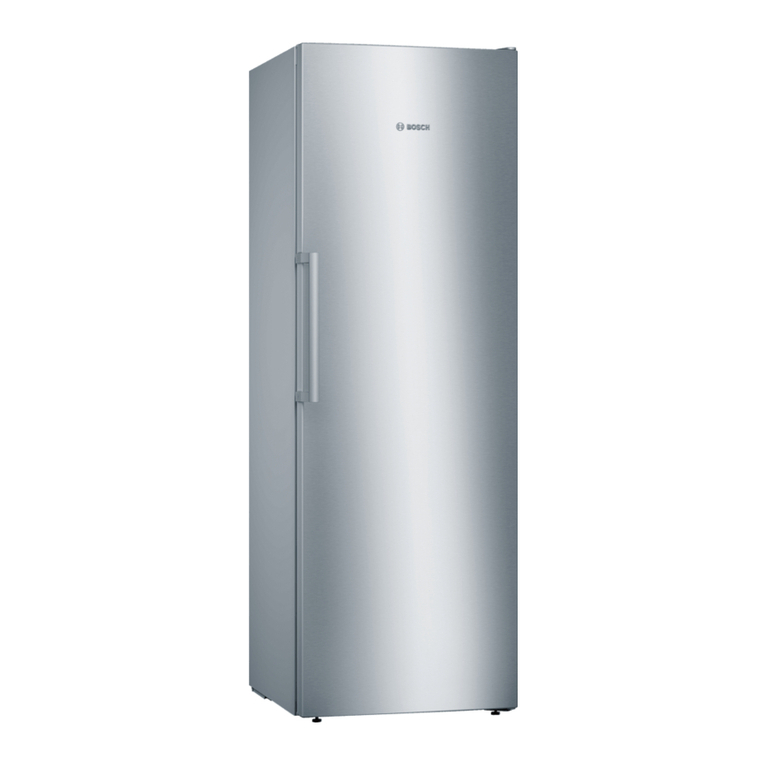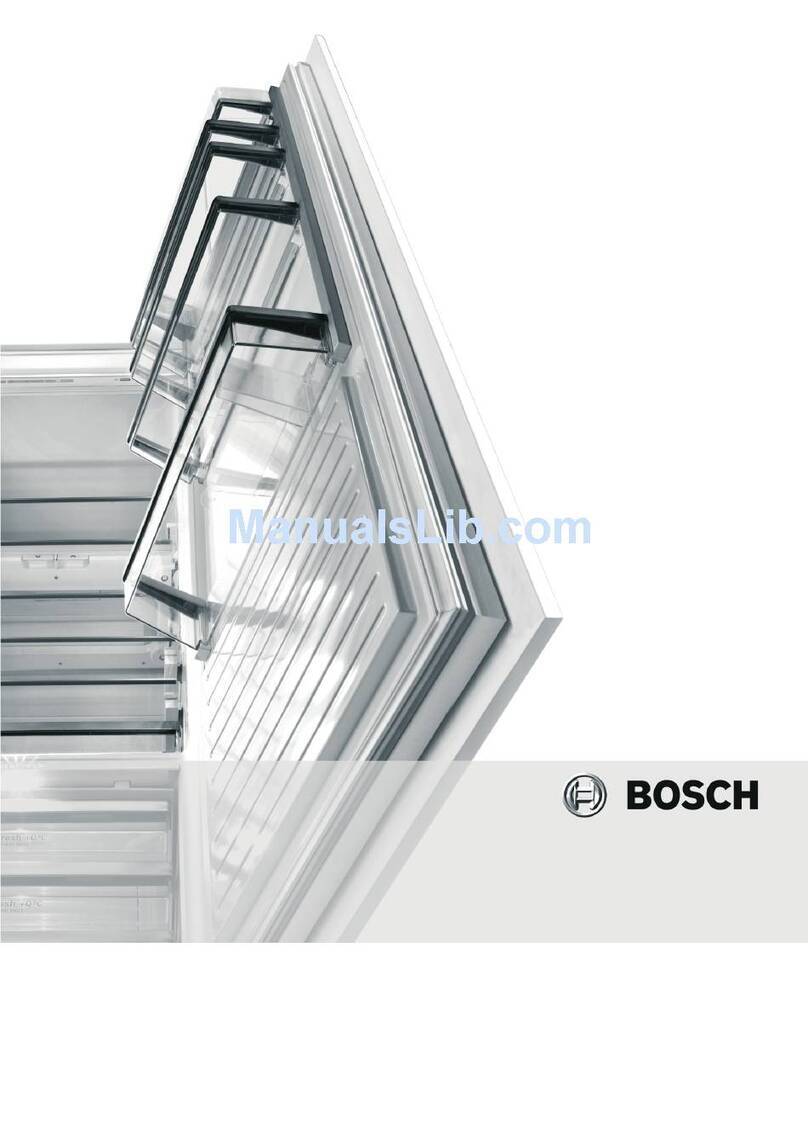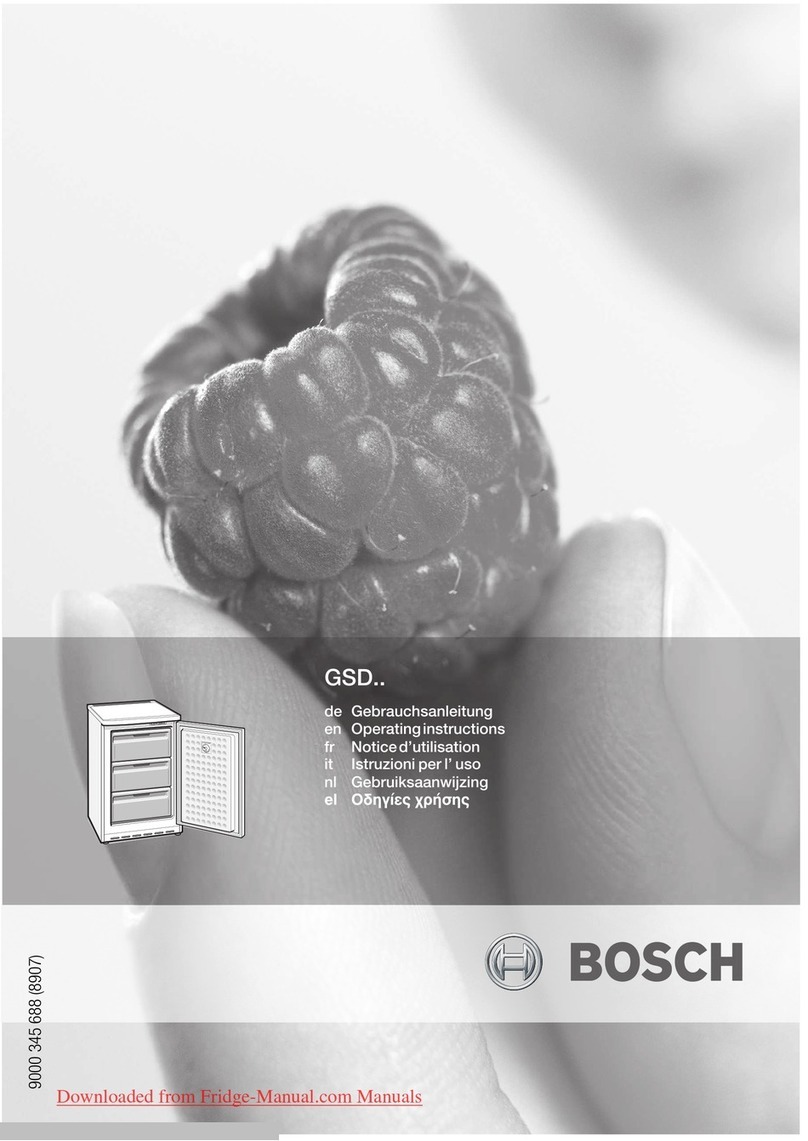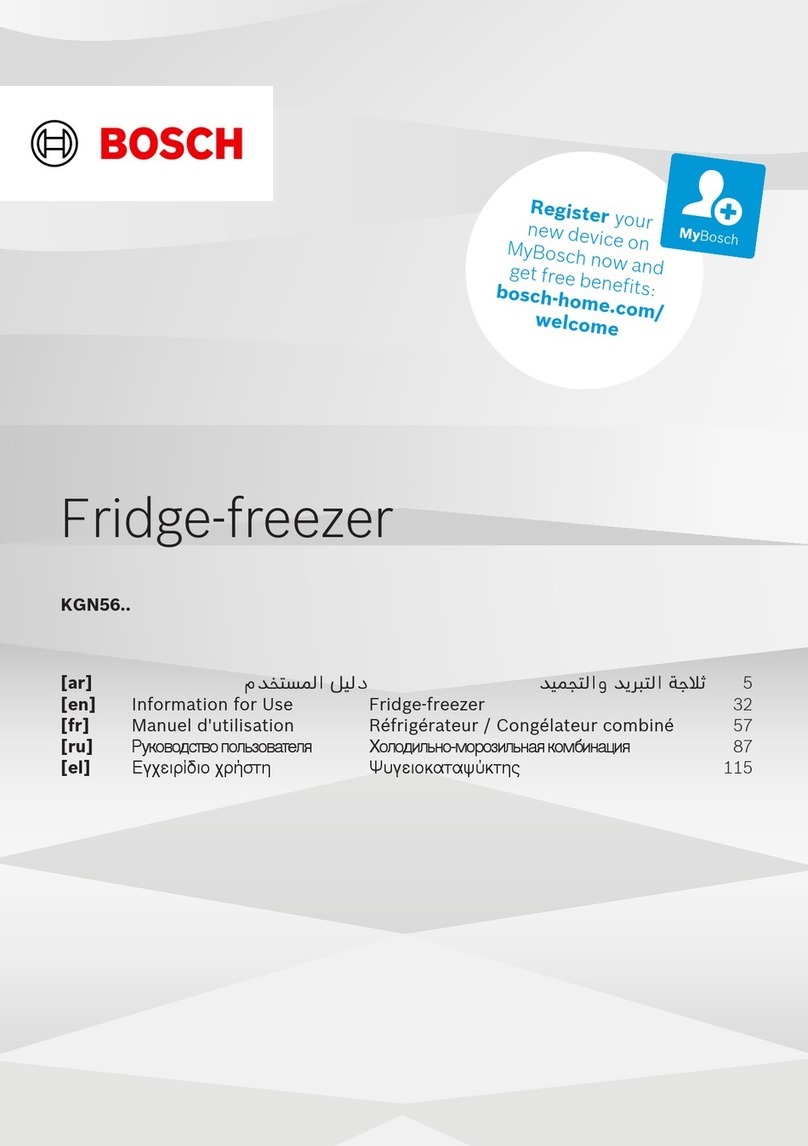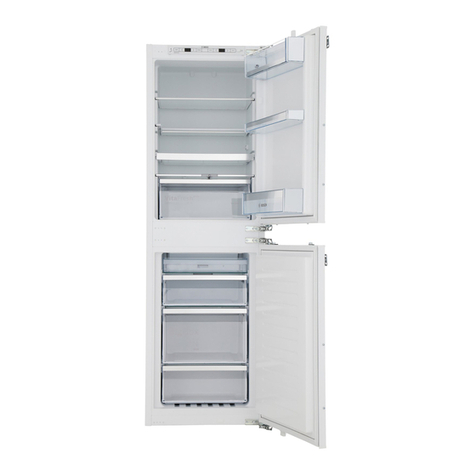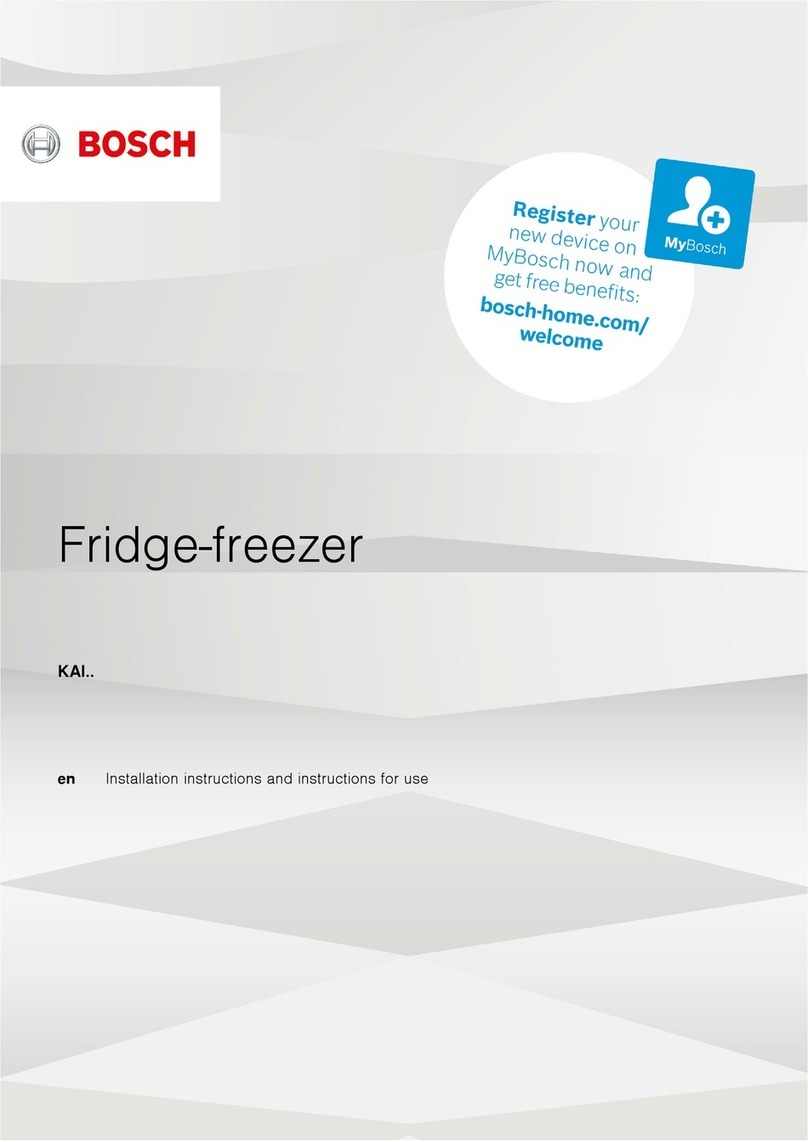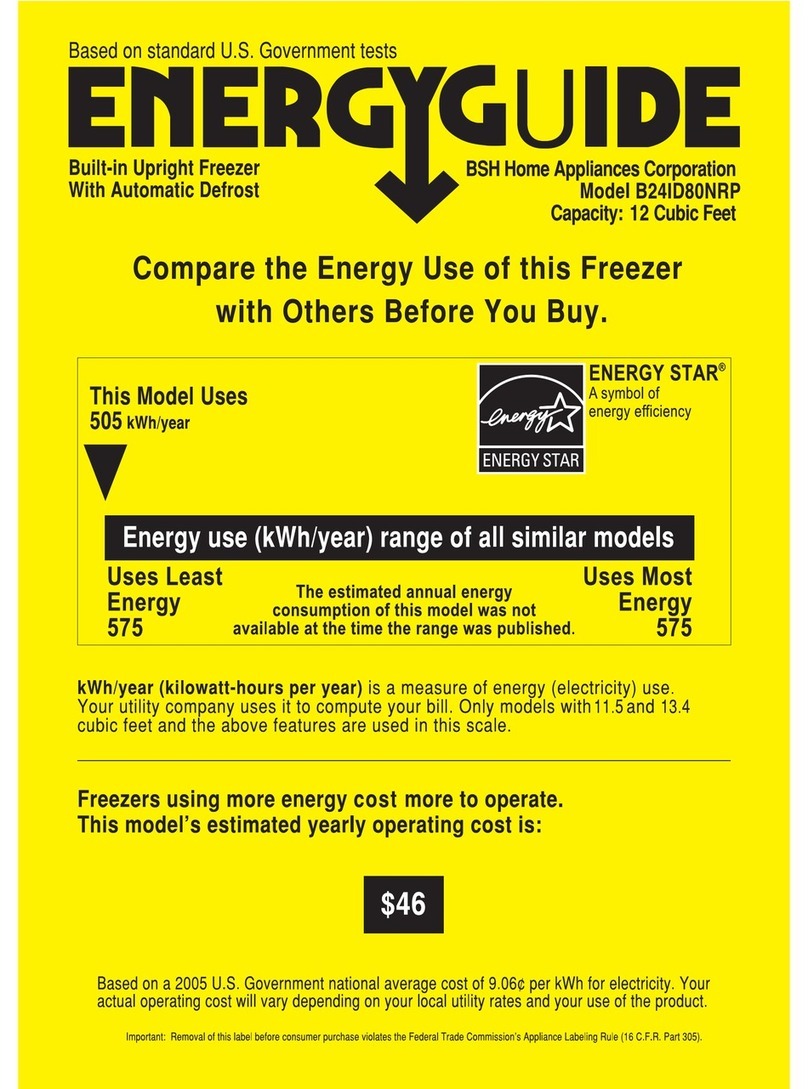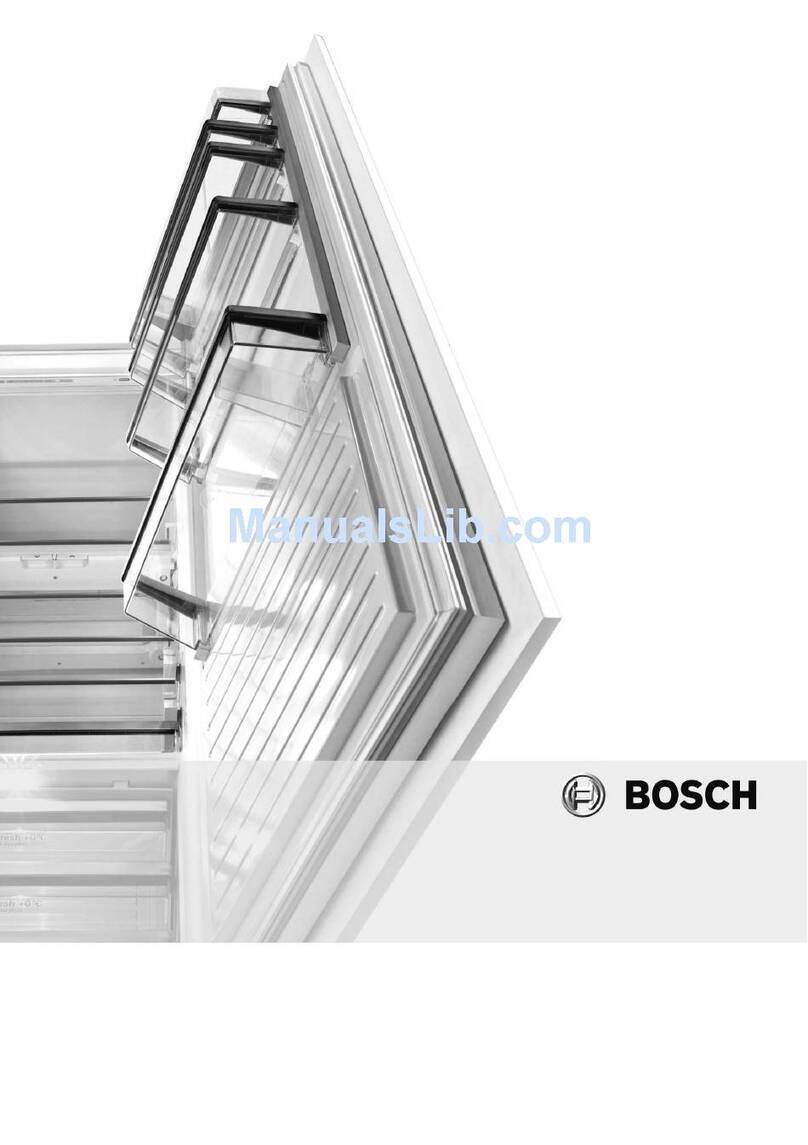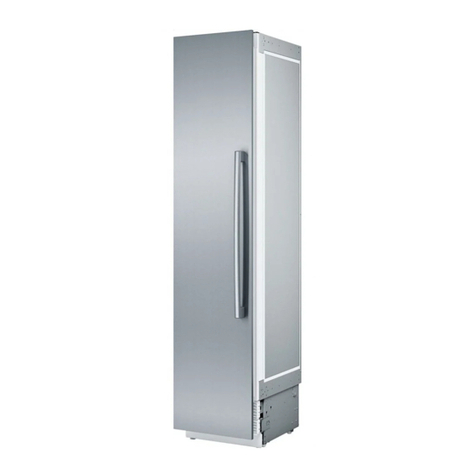en
3
enTable of Contents
enIn structio nforUse
Safety and warning
information
Before you switch ON
the appliance
Please read the operating and
installation instructions carefully!
They contain important information on
how to install, use and maintain the
appliance.
The manufacturer is not liable if you
fail to comply with the instructions and
warnings. Retain all documents for
subsequent use or for the next owner.
Technical safety
This appliance contains a small quantity
of environmentally-friendly but flammable
R600a refrigerant. Ensure that the tubing
of the refrigerant circuit is not damaged
during transportation and installation.
Leaking refrigerant may cause eye
injuries or ignite.
If damage has occurred
■Keep naked flames and/or ignition
sources away from the appliance,
■thoroughly ventilate the room for
several minutes,
■switch off the appliance and pull out
the mains plug,
■inform customer service.
The more refrigerant an appliance
contains, the larger the room must be in
which the appliance is situated.
Leaking refrigerant can form a flammable
gas-air mixture in rooms which are too
small.
The room must be at least 1 m³ per 8 g
of refrigerant. The amount of refrigerant
in your appliance is indicated on
the rating plate inside the appliance.
If the power cord of this appliance is
damaged, it must be replaced by the
manufacturer, customer service or
a similarly qualified person. Improper
installations and repairs may put the user
at considerable risk.
Repairs may be performed by the
manufacturer, customer service
or a similarly qualified person only.
Only original parts supplied by the
manufacturer may be used.
The manufacturer guarantees that
only these parts satisfy the safety
requirements.
A extension cable may be purchased
from customer service only.
Important information when
using the appliance
■Never use electrical appliances inside
the appliance (e.g. heater, electric ice
maker, etc.). Risk of explosion!
■Never use a steam cleaner to defrost
or clean the appliance!
The steam may penetrate electrical
parts and cause a short-circuit.
Risk of electric shock!
■Do not use pointed or sharp-edged
implements to remove frost
or layers of ice. You could damage
the refrigerant tubing.
Leaking refrigerant may ignite
or cause eye injuries.
■Do not store products which contain
flammable propellants (e.g. spray
cans) or explosive substances
in the appliance. Risk of explosion!
■Do not stand or support yourself
on the base, drawers or doors, etc.




















